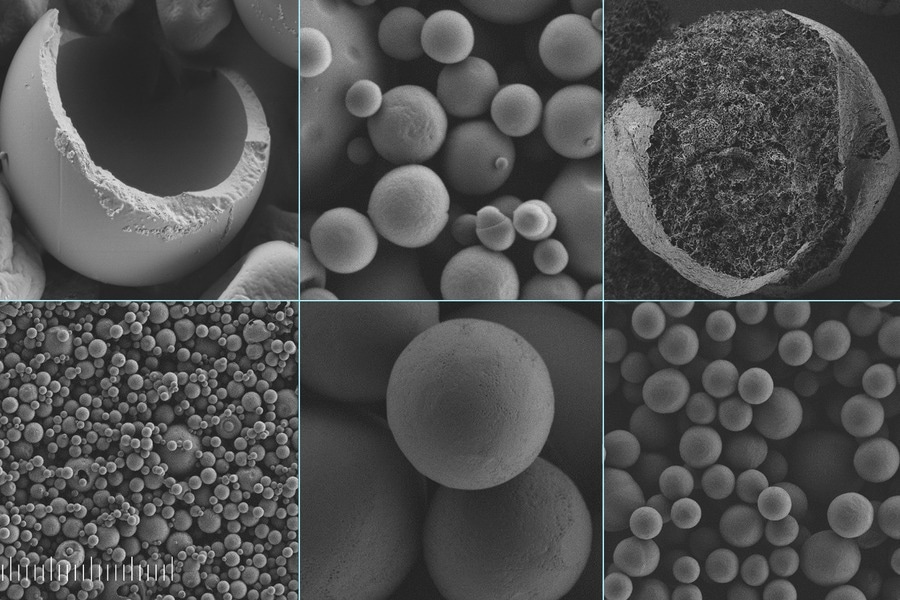Plastics, including microplastics, are abundant in the world we live in. However, one of the main issues with plastic is that it is largely not biodegradable, and unlike materials that do break down or rot, some forms of plastic can remain in the environment for up to 1000 years.

Image Credit: MIT
Microplastics, in particular, have become under increased scrutiny in recent years as they are found almost everywhere in soil, water and air, including Antarctica. Recently, researchers have even found microplastics present in human blood. This has raised concerns as they are recognized as a threat to the environment and animal and human health.
A research team at MIT has recently designed a silk-based system that could help easily produce an inexpensive substitute for microplastics. Published in the journal Small, the paper was written by Muchun Liu, MIT postdoc, Benedetto Marelli, MIT professor of civil and environmental engineering, and a team based at the German and American facilities of the chemical company BASF.
Mitigating the Spread
Generally, microplastics (particles less than 5mm in size) are purposefully added to a wide range of products, including agricultural chemicals, cigarette filters, paints, cleaning and personal care products, and detergents. They can even derive from dust and waste produced by car tires, as well as created by the effects of the elements on larger waste plastics left in the environment.
All-in-all, it is estimated around 50,000 tons of microplastics a year are generated in the European Union alone, as specified by the European Chemicals Agency. To mitigate the spread, a recent declaration by the EU states the commitment to eliminating non-biodegradable microplastics by 2025; thus, finding suitable replacements, which currently do not exist, is crucial.
The eco-friendly biodegradable silk material developed by the team at MIT and BASF could be a solution, helping contribute to a future where non-biodegradable plastics are phased out. However, the burden is not only on fabricating new materials, as new materials make up only 10-15% of microplastics in the environment.
We cannot solve the whole microplastics problem with one solution that fits them all… Ten percent of a big number is still a big number. … We’ll solve climate change and pollution of the world one percent at a time.
Benedetto Marelli, Professor of Civil and Environmental Engineering, MIT
Tunable Silk
Using silk as an alternative biodegradable material has several advantages. It is safe for use with foods and medical products as it is non-toxic and breaks down easily in the human body. The silk used for the new biodegradable plastic alternative is relatively affordable as it uses all parts of the silkworm cocoon, which avoids using the same expensive methods and techniques used for creating high-quality silk for use in fabrics.
Using existing, conventional spray-based manufacturing equipment, the researchers were able to demonstrate that the tunable silk-based coating material was effective for producing a water-soluble microencapsulated herbicide product.
In fact, the process used is so simple and can be easily modified for each application that the silk-based material could be introduced into existing manufacturing lines and equipment on a drop-in basis.
This was then tested on a greenhouse-grown corn crop and offered better results that inflicted less damage on the plants when compared with a readily available commercial product.
There is a strong need to achieve encapsulation of high-content actives to open the door to commercial use. The only way to have an impact is where we can not only replace a synthetic polymer with a biodegradable counterpart, but also achieve performance that is the same, if not better.
Benedetto Marelli, Professor of Civil and Environmental Engineering, MIT
The tunability of the material is what makes it so effective as it works with existing equipment, the researchers claim. Being able to adjust the polymer chain arrangements of silk materials also makes it possible to refine coating properties even after they have dried and hardened.
To encapsulate different materials, we have to study how the polymer chains interact and whether they are compatible with different active materials in suspension
Muchun Liu, Postdoc, MIT
This innovative, eco-friendly, biodegradable silk presents an alternative to microplastics while making use of low-grade silk that would otherwise be discarded.
Given the challenges that humanity faces with regard to the plastic problem and trying to mitigate the spread of non-biodegradable microplastics, this new so-called wonder material could help the EU and other states and nations achieve their environmental goals in the near future.
References and Further Reading
Chandler, D., (2022) Silk offers an alternative to some microplastics. [online] MIT News | Massachusetts Institute of Technology. Available at: https://news.mit.edu/2022/silk-alternative-microplastics-0720
Liu, M., Millard, P., Urch, H., Zeyons, O., Findley, D., Konradi, R. and Marelli, B., (2022) Microencapsulation of High‐Content Actives Using Biodegradable Silk Materials. Small, [online] p.2201487. Available at: https://onlinelibrary.wiley.com/doi/full/10.1002/smll.202201487
Leslie, H., van Velzen, M., Brandsma, S., Vethaak, A., Garcia-Vallejo, J. and Lamoree, M., (2022) Discovery and quantification of plastic particle pollution in human blood. Environment International, [online] 163, p.107199. Available at: https://www.sciencedirect.com/science/article/pii/S0160412022001258
Disclaimer: The views expressed here are those of the author expressed in their private capacity and do not necessarily represent the views of AZoM.com Limited T/A AZoNetwork the owner and operator of this website. This disclaimer forms part of the Terms and conditions of use of this website.